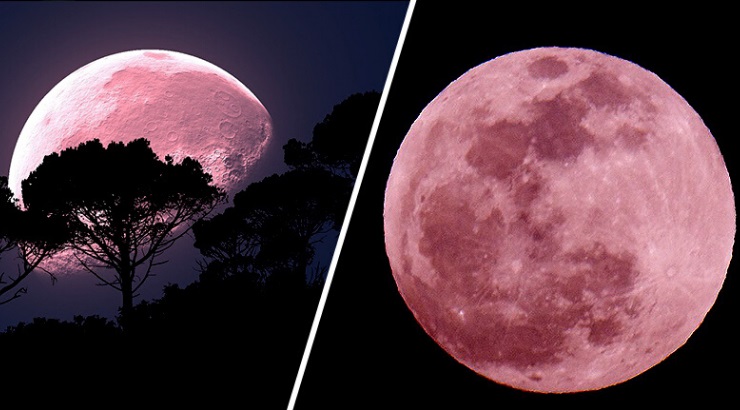The full pink supermoon has peaked on April 7 and 8, depending on where in the world you find yourself.
Expected to be the brightest supermoon of 2020, and having delivered this promise, this special moon came at a time when millions across the globe don’t have the freedom to travel to find the perfect viewing spot away from city lights. We hope city dwellers were able to enjoy the light of this moon from the safety of their homes and take comfort in the fact that many cities are enjoying clearer skies as a result of millions of vehicles not being on the roads.
The first full moon of spring, also known as the Paschal Moon in the Christian calendar and used to calculate the date for Easter, was visible after sunset and reached its peak illumination at 10:35pm, EDT.
Many expected the moon to actually be pink. Instead it was its usual color, just brighter and bigger, especially when was close to the horizon at moon rise or moon set.
According to The Farmer’s Almanac, full moons are named after the seasons or events usually happening during the season. As such, the Pink Moon is named for the first spring flowers that cover the ground like a pink carpet, called Wild Ground Phlox or Moss Phlox (Phlox subulata). Native to North America, these flowers often bloom around April’s full moon.
Native American tribes, Anglo Saxons, and Germanic regions named the months after seasonal features often associated with nature in the Northern Hemisphere. Many of the Native American names were used by the Colonial settlers and are still used today. Other names for the April full moon include the Sprouting Grass Moon, Fish Moon, Hare Moon, and Egg Moon (birds start laying eggs).
According to timeanddate.com, a supermoon occurs when the full moon or new moon’s approach is closest to Earth, its “perigee,” often called a supermoon.
Their website explains that supermoon is not an official astronomical term:
“It was first coined by an astrologer, Richard Nolle, in 1979. He defined it as ‘a New or a Full Moon that occurs when the Moon is at or near (within 90% of) its closest approach to Earth in its orbit’. It is not clear why he chose the 90% cut off in his definition.’’
At this unprecedented time when the people of the world face a common, unseen enemy, whether you can bask in the light of this supermoon or even just get a brief glance at it, take the opportunity to blow it a kiss of victory and peace to share with the world.
The third supermoon of 2020 is just a month away, on May 7. Perhaps by then we’ll be able to venture outside to find that special spot to moon gaze!






